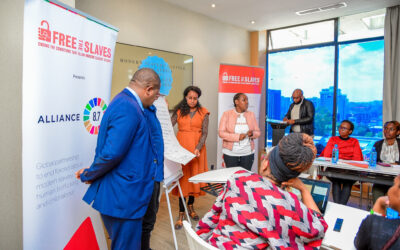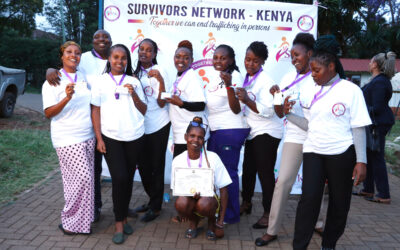A little-noticed executive order last week from President Donald Trump has directed federal officials to ramp-up efforts to target transnational criminal organizations, including human trafficking rings. The order, issued February 9, says criminals are “threatening the safety of the United States and its citizens,” and international trafficking “risks creating a humanitarian crisis.”
The Alliance to End Slavery and Trafficking (ATEST), a coalition of U.S. organizations including Free the Slaves, says the order “falls short” by focusing too heavily on law enforcement and not broadly on trafficking prevention and protection of victims.
“The framing of this order represents a significant departure from a long-standing victim-centered approach that is critical to successfully eradicating human trafficking and that is enshrined in existing law,” the ATEST statement says. “For nearly two decades, the U.S. has implemented a strategy centered around protection of victims, prevention of the conditions that allow trafficking to flourish, prosecution of perpetrators, and partnership with civil society and the private sector. By only focusing on human trafficking from a law enforcement perspective, the executive order undermines this proven approach and jeopardizes U.S. leadership on combating this horrific crime.”
See the full White House executive order here. See the full ATEST statement here.
The president’s order says a “comprehensive and decisive” approach is needed to fight international human trafficking. President Trump has directed the secretary of state, attorney general, secretary of homeland security and director of national intelligence to coordinate action to “identify, interdict, disrupt and dismantle” trafficking gangs – including “swift removal from the United States of foreign nationals who are members of such organizations.” He has asked cabinet officials to reach out to non-governmental organizations for advice, and issue a status report by August.
“The U.S. has until now leveraged the full might and range of U.S. foreign policy, from diplomacy and trade policy to foreign assistance and multilateral engagement, to make a significant impact on human trafficking around the world,” ATEST responds. The coalition has published an eight-point memo on how the administration should broaden its strategy on human trafficking:
- Tackling root causes must underlie any strategy for ending human trafficking. The executive order is silent on strategies to prevent human trafficking by reducing vulnerabilities to this horrific human rights abuse in the United States and around the world.
- Comprehensive services to protect human trafficking victims must be a core component of any anti-trafficking initiative. The Trafficking Victims Protection Act of 2000 laid out this approach acknowledging that without cooperating and stable victim-witnesses, effective prosecution of human trafficking is impossible.
- While ATEST supports better data collection to maximize U.S. investments, the safety and security of victims, witnesses, and their family members must be paramount. The implementation of the executive order must not violate the privacy or risk the safety of any victims, witnesses, or their family members.
- Traffickers often use immigration status as a tool of coercion to exploit immigrant communities, both documented and undocumented. Local enforcement of immigration law, as mandated under the executive order for “Border Security and Immigration Enforcement Improvements,” will irreparably damage law enforcement’s ability to identify, investigate and prosecute traffickers. Both executive orders will result in an imbalanced approach that is likely to exacerbate immigrants’ vulnerabilities and assist traffickers preying on these communities.
- Traffickers exploit weak law enforcement regimes and abuse legal structures and institutions, and they target the most vulnerable in society. This often includes runaway and homeless youth; foster youth; the lesbian, gay, bisexual, transgender, intersex, and queer (LGBTIQ) community; Native Americans; Asian Americans and Pacific Islanders; migrant workers; youth of color; children; low literacy or numeracy individuals; and those with disabilities. The executive order is silent on the need to reach vulnerable communities.
- Promoting corporate accountability is critical to disrupting and dismantling transnational criminal networks of human traffickers. The executive order is silent on whether the administration intends to focus on the escalating risks of forced labor and human trafficking in global supply chains.
- Human trafficking requires a whole of government approach. The executive order is silent on existing interagency frameworks to combat human trafficking, including the President’s Interagency Task Force to Monitor and Combat Trafficking in Persons (PITF) and the Senior Policy Operating Group (SPOG). These platforms engage critical agencies like the Department of Treasury that tracks financial crimes, the Department of Health and Human Services that provides support for victim services, and the Department of Labor that protects workers.
- The Trafficking Victims Protection Act (TVPA) implements the U.S.’ obligations under the Palermo Protocol. The executive order is silent on the TVPA and on our international legal obligations to protect victims and address root causes.
ATEST notes that its new report “A Presidential Agenda for Abolishing Modern Slavery and Human Trafficking” is an urgent call for the new administration to undertake a “deliberate, forward leaning, and strategic initiative” to combat human trafficking.



